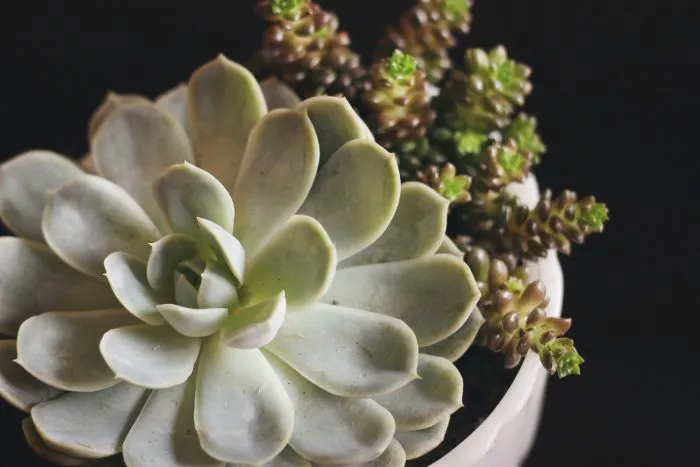Succulents are popular for outdoor gardens due to their unique beauty and low maintenance requirements. These plants are well adapted to dry conditions, making them ideal for summer gardens. However, even succulents need water, especially during the hot summer months. Understanding how often to water outdoor succulents in summer is essential for their health and vitality. This article will explore the watering needs of outdoor succulents during summer, factors that influence watering frequency, and best practices for maintaining these resilient plants.
Understanding Succulent Watering Needs
Succulents are designed to store water in their leaves, stems, and roots. This adaptation allows them to survive in arid environments. However, during the summer, especially in regions with high temperatures and low humidity, succulents can deplete their water reserves quickly. Therefore, it is crucial to provide adequate moisture to keep them healthy.
In general, outdoor succulents should be watered when the soil is dry. Unlike many other plants, succulents do not thrive on a fixed watering schedule. Instead, their needs depend on various environmental factors. During summer, the frequency of watering may increase due to higher temperatures and increased sunlight.
Factors Influencing Watering Frequency
Several factors influence how often outdoor succulents need to be watered during the summer. These factors include temperature, humidity, soil type, and the specific type of succulent.
Temperature is one of the most significant factors. As temperatures rise, succulents lose moisture more rapidly through evaporation and transpiration. In extremely hot weather, you may need to water your succulents more frequently, possibly every few days.
Humidity levels also play a role in watering frequency. In dry climates, succulents may require more water than in humid areas. High humidity can slow down the evaporation rate, allowing the soil to retain moisture for a longer period.
Soil type is another critical factor. Succulents thrive in well-draining soil that prevents water retention. If your garden has sandy or rocky soil, it will drain quickly, requiring more frequent watering. Conversely, heavy clay soils retain moisture and may require less frequent watering.
The specific type of succulent also affects watering needs. Some species are more drought-tolerant than others. For instance, sedums and echeverias generally require less water than larger varieties like agaves or aloes. Knowing the specific needs of your succulents can help you determine how often to water them.
Signs of Underwatering and Overwatering
Recognizing the signs of underwatering and overwatering is essential for maintaining healthy outdoor succulents.
Underwatered succulents may appear shriveled or wilted. The leaves may become soft and lose their plumpness, and the plant may exhibit stunted growth. In severe cases, leaves can drop off or turn brown at the tips.
On the other hand, overwatered succulents often show different symptoms. The leaves may become mushy and discolored, often turning yellow or brown. If the roots are damaged due to excess moisture, the plant may develop a foul smell. It is crucial to adjust your watering practices if you notice any of these signs.
Best Practices for Watering Outdoor Succulents in Summer
To ensure your outdoor succulents receive the right amount of water during the summer, consider the following best practices.
Check Soil Moisture: Before watering, check the moisture level of the soil. You can do this by sticking your finger into the soil about an inch deep. If it feels dry, it is time to water. If it still feels moist, wait a few days before checking again.
Water Thoroughly: When you water, make sure to soak the soil thoroughly. Water should flow out of the drainage holes at the bottom of the pot or garden bed. This ensures that the entire root system receives adequate moisture.
Water in the Morning: The best time to water outdoor succulents is in the early morning. Watering in the morning allows the plants to absorb moisture before the heat of the day. It also reduces the risk of fungal diseases that can occur if water sits on the leaves overnight.
Use Mulch: Applying a layer of mulch around your succulents can help retain soil moisture. Organic mulch, such as gravel or small stones, not only conserves water but also regulates soil temperature and prevents weeds.
Adjust for Rainfall: If you experience summer rain, adjust your watering schedule accordingly. Succulents do not need additional watering if the soil is already moist from rainfall.
Observe Your Plants: Regularly monitor your succulents for signs of stress. Healthy succulents should have firm, plump leaves and vibrant colors. If you notice any changes in appearance, adjust your watering practices accordingly.
Conclusion
Knowing how often to water outdoor succulents in summer is essential for their health and growth. While succulents are drought-tolerant, they still require regular watering during hot weather. By considering factors such as temperature, humidity, soil type, and the specific needs of your plants, you can establish an effective watering routine.
Remember to check soil moisture, water thoroughly, and observe your plants for signs of stress. With proper care, your outdoor succulents will thrive, adding beauty and resilience to your garden throughout the summer months. Enjoy the process of nurturing these remarkable plants and watching them flourish in their outdoor environment.


